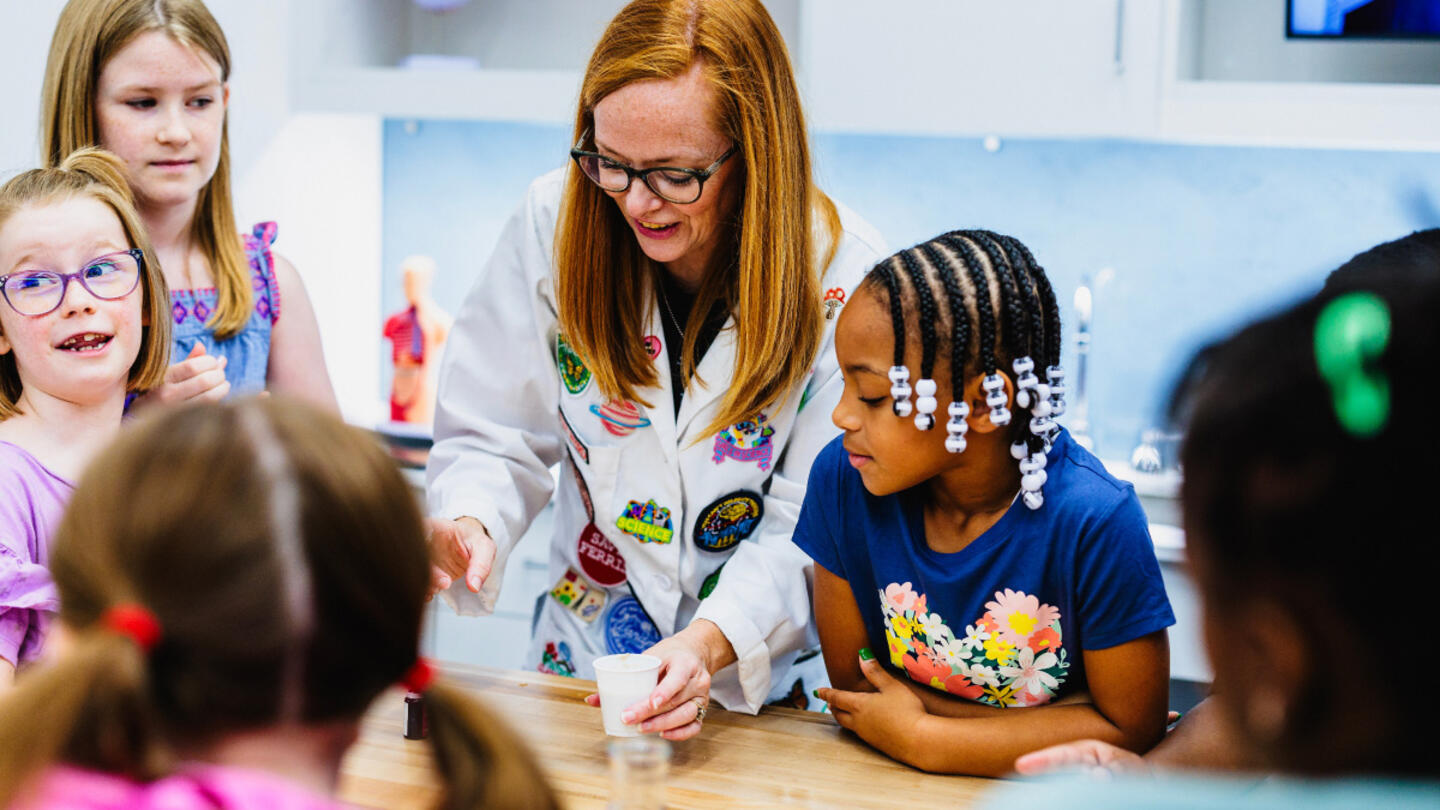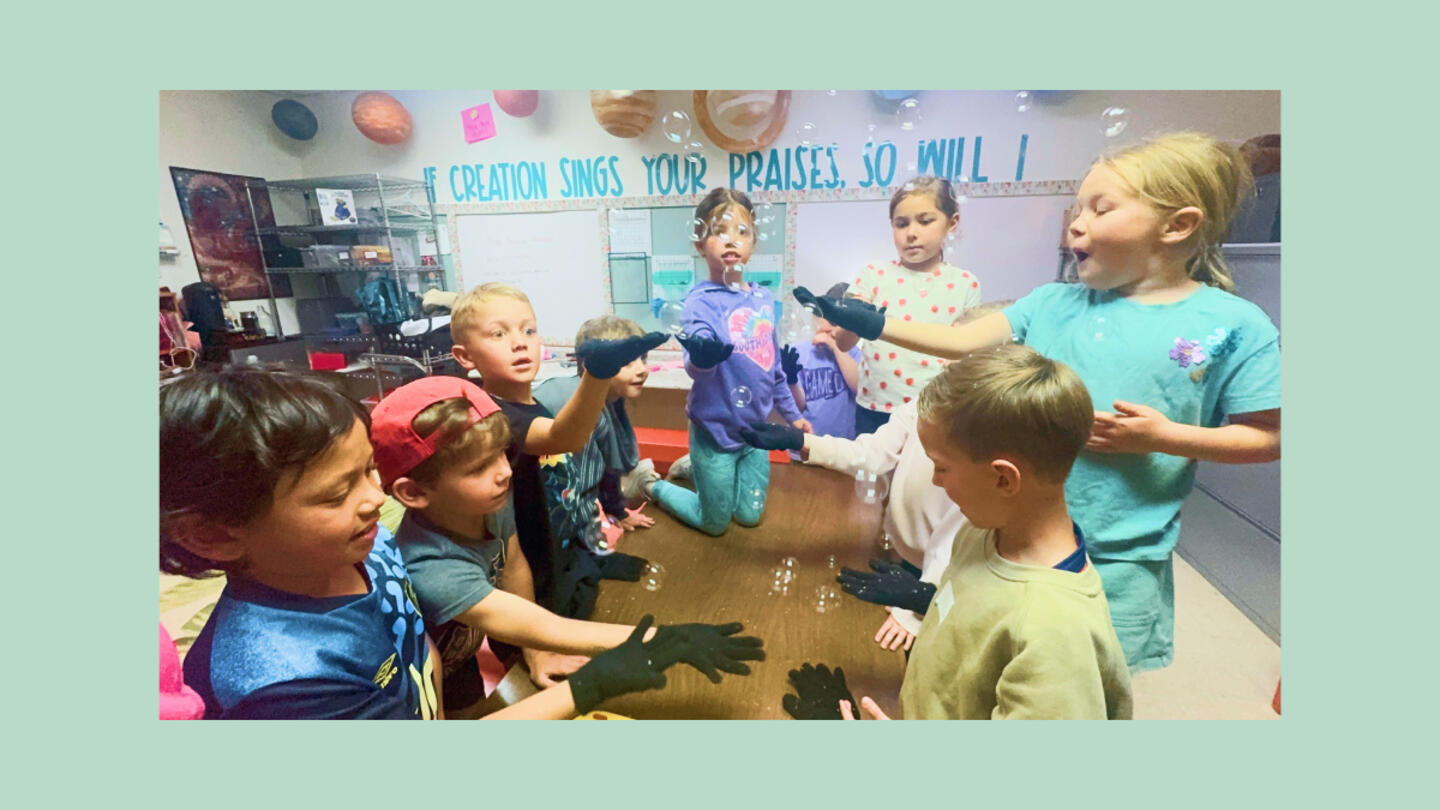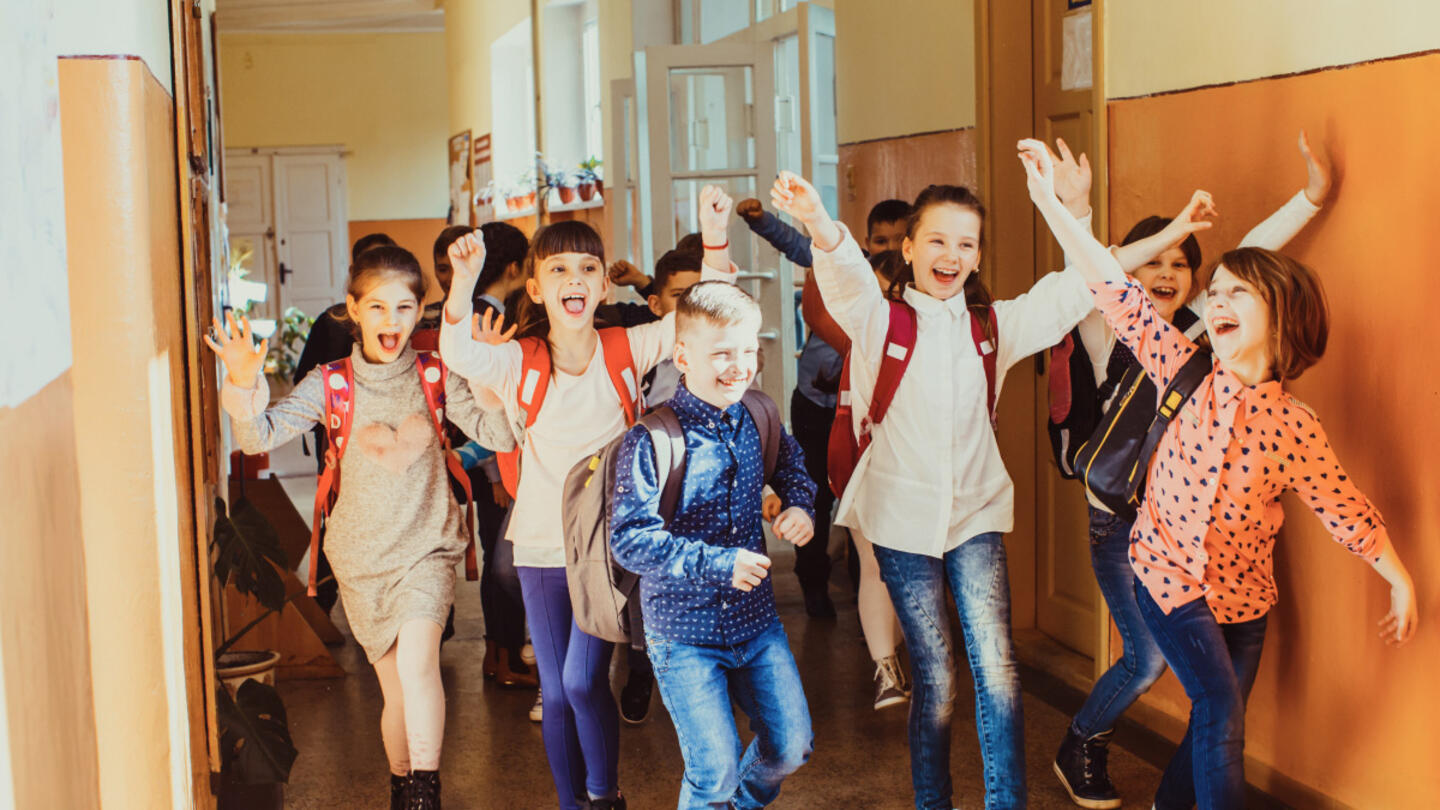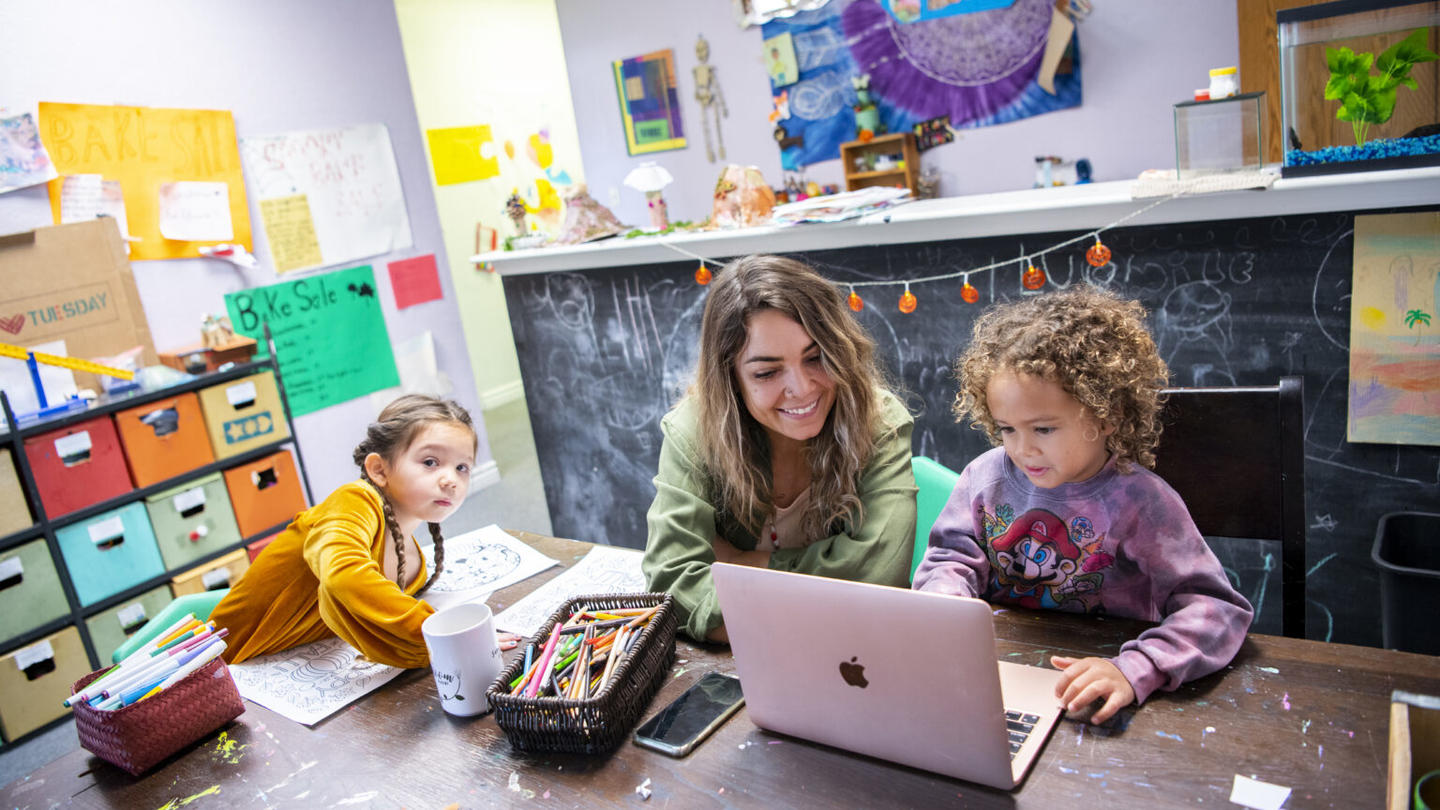If you walked into a typical public K-12 classroom today, it would not look significantly different from your own classroom 15, 20, or even 30 years ago.
Perhaps the chalkboards would be replaced by whiteboards, and teachers may now have microphones hanging around their necks. However, the classroom setup and teaching methods would be very similar: students passively learning from desks in rows facing the front of the room, where the teacher lectures from a state-mandated, standards-based curriculum, focusing on subjects and information likely to be on end-of-year exams.
The most troubling similarity across the decades: large gaps in student learning proficiency that persist and continue to widen. After decades of trying to make standardized education work, communities, parents, and educators are pushing for solutions and policy reforms that support variety and innovation. This guide explores the primary challenges in K-12 education and offers solutions that could lead to transformative outcomes.
First, let’s unpack the biggest challenges that should be addressed.
Issue 1: One-size-fits-all approach
In 1989, 49 governors and President George H.W. Bush convened with the predetermined goal of improving the quality of American education. Their primary means for achieving this goal was the standardization of learning expectations to be monitored via yearly testing.
In the 35 years since the summit, federal and state legislatures have relied on a one-size-fits-all education model. Governments have focused more on what schools are teaching rather than who they are teaching. However, the idea that every school can and should be teaching the same things, in the same way, has failed miserably. For example, two-thirds of high school students report being disengaged, and some inner-city schools have zero students testing at grade level in math and reading.
One-size-fits-all teaching methods don’t factor in individual students and their unique needs and learning styles. This can lead to disengagement, frustration, and poor outcomes.
Issue 2: Lack of individualized education
Research suggests students are more likely to thrive in environments that offer personalized learning experiences tailored to their interests and abilities. In one study, students in schools using personalized learning methods outperformed their peers in math and reading over two school years, and students who lagged when they first entered personalized learning environments reached or surpassed national averages by the end of those two years.
Increased engagement is a key benefit of personalized learning. When students feel like their needs matter and are given the reins to their own learning, they’re more likely to stay engaged and master difficult concepts.
With standardized instruction and testing, personalized learning takes a back burner because schools and teachers worry about losing funding and programs if their students don’t perform well on end-of-year tests. Parents also get caught up in grades and test scores because in traditional education systems scores can determine a child’s future.
Unfortunately, the obsession with tests and grades takes a toll. When students leave high school, often the most prominent skills they’ve acquired are how to take tests and how to meet academic requirements — neither of which prepares them for life in the real world. They have no understanding of their own aptitudes, strengths, or talents, and they feel they lack the social and emotional skills to navigate adult life.
When learning is individualized, it empowers children to explore their natural gifts and talents, hone them, and discover ways to use them to benefit themselves and others.
Issue 3: Inadequate preparation for the real world
The current public education system is heavily focused on test scores and college preparation. To that end, high schools emphasize academic subjects like math, reading, and science. Students leave high school knowing how to memorize information, take tests, and do the kind of math and chemistry most of them will never use again.
In the meantime, most students feel unprepared socially and emotionally for life after school. Their traditional K-12 education hasn’t equipped them with essential life skills such as financial literacy, critical thinking, emotional intelligence, problem-solving, resilience, and effective communication.
As New York high school biology teacher Selim Tlili put it: “Education policy has increasingly centered on expanding access to college and helping students become ‘college ready.’ Rather than helping students become competent and self-sufficient adults, as school used to do, high school now focuses on the development of abstract skills that will purportedly serve them in college.”
Many students leave their K-12 education feeling unprepared for the workforce and adult responsibilities. They’ve been taught to pursue college for so long that they lack awareness and information about alternative postsecondary career paths that don’t require degrees. According to a 2023 study by ECMC, only 13% of high school graduates felt they were prepared to choose a path after high school. Of students who chose to pursue a degree, 64% of them cited a lack of information about other pathways as a barrier to choosing anything else.
Sign up for Stand Together's K-12 newsletter and get stories, ideas, and advice from changemakers who are transforming education across the country.
Reform 1: Embrace individualized education
To address these pressing issues, K-12 education reform efforts should prioritize increasing access to individualized learning experiences that cater to each student’s unique needs and interests. Personalized education options, such as self-directed learning, can empower students to take charge of their educational journey, leading to increased engagement and success.
VELA, part of the Stand Together community, believes that sustainable change in education will come from the ground up. Through a vibrant network of education changemakers, VELA catalyzes a dynamic alternative education ecosystem by supporting community-driven innovation and accelerating the exploration of new frontiers in education.
Self-directed learning is an innovative model that allows students to set their own educational goals and pursue their interests at their own pace. Examples of such pioneering initiatives include The Forest School, which emphasizes leadership skills, communication, and team dynamics, and Life Skills Academy, which focuses on giving children space and resources to develop holistically. One Stone school takes this innovation a step further by letting its high schoolers create their own curriculums.
Reform 2: Offer a diverse range of learning options
K-12 education reform should prioritize expanding educational options and access for all students. By offering diverse learning opportunities, educational institutions can better meet the needs and interests of every learner.
A wide array of choices empowers families to create the best educational experience tailored to their children’s needs. Some may choose the local public school, while others might prefer a one-room microschool or a mix of public school and specialized after-school programs. There’s no single right way, and the possibilities for these learning options are endless.
Surf Skate Science brings science to life through surfing and skating for students in third grade through 10th grade. At Uncommon Construction, students gain a real-world education while they work together to build a home in one semester. Electric Girls empowers young women to pursue STEM subjects by allowing them to choose and complete apprentice-like projects.
Education innovations are happening rapidly in the private education sector — fueled largely by disillusioned educators and parents. Scholarship programs like North Carolina’s Opportunity Scholarship and educational savings accounts like Arizona’s Empowerment Scholarship Account provide ways of financing and accessing tailored education options — whether public or private. Love Your School offers personalized support to families seeking alternative education models, empowering them to make informed choices and pursue the best education path for their children.
Reform 3: Drive meaningful educational reform via advocacy and policy changes
Advocating for policy changes that promote education freedom and innovation can drive meaningful education reform. Grassroots activists, educators, and organizations in the Stand Together community work to champion new education policies and initiatives, fostering a more inclusive and individualized K-12 education experience.
Populace studies the science of individuality, including the importance of teaching people based on their unique abilities and interests. yes. every kid., Available to All, and Americans for Prosperity are advocacy organizations focused on informing policymakers, education stakeholders, and the public about the need for education reform.
Building strong relationships between educators, students, families, and communities is essential for driving transformative change in K-12 education. By working together, stakeholders can encourage and support the entrepreneurs driving K-12 education reform. By investing in new and creative approaches to education, we can unlock the potential of individualized learning and empower students, educators, and communities to thrive.
The future of K-12 education
The future success of K-12 education lies in embracing individualized learning experiences and expanding access to diverse education options. By fostering collaboration, innovation, and community engagement, we can empower students, educators, and communities to overcome challenges and usher in a new era of K-12 education that truly serves the unique needs of every learner.
Learn more about Stand Together’s education efforts and explore ways you can partner with us.

This colearning space has the potential to bridge the divide between public and private education.

New Johns Hopkins data shows homeschooling’s recent surge has transformed the education landscape.
Step 1: Find the best learning environment for your child. Step 2? Figure out how to pay for it.

Here’s what happens when AI replaces teachers.
